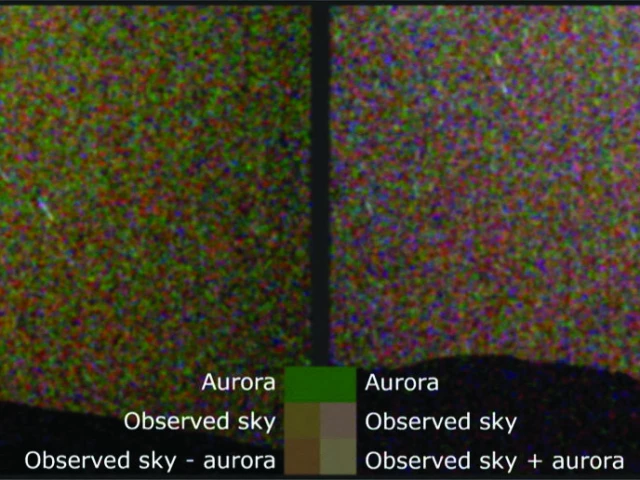NASA rover observes aurora on Mars
Visible light seen for first time on planet

NASA's Perseverance rover has observed an aurora on Mars in visible light for the first time, with the sky glowing softly in green in the first viewing of an aurora from any planetary surface other than Earth.
Scientists said the aurora occurred on March 18, 2024, when super-energetic particles from the sun encountered the Martian atmosphere, precipitating a reaction that created a faint glow across the entire night sky.
Auroras have been observed previously on Mars by satellites from orbit in ultraviolet wavelengths, but not in visible light. The sun three days earlier had unleashed a solar flare and an accompanying coronal mass ejection - a huge explosion of gas and magnetic energy that brings with it large amounts of solar energetic particles - that traveled outward through the solar system.
Mars is the fourth planet from the sun, following Mercury, Venus and Earth. Scientists had simulated the event in advance and prepared instruments on the rover to be ready to observe the expected aurora. Perseverance has two instruments that are sensitive to wavelengths in the visible range, meaning they detect colors human eyes can see. The researchers used the rover's SuperCam spectrometer instrument to identify exactly the wavelength of the green glow and then used its Mastcam-Z camera to take a snapshot of the softly glowing green sky.
An aurora forms on Mars the same way as on Earth, with energetic charged particles colliding with atoms and molecules in the atmosphere, exciting them, and causing subatomic particles called electrons to emit light particles called photons.
"But on Earth, the charged particles are channeled into the polar regions by our planet's global magnetic field," said Elise Wright Knutsen, a postdoctoral researcher at the University of Oslo's Center for Space Sensors and Systems and lead author of the study published this week in the journal Science Advances.
"Mars has no global magnetic field so the charged particles bombarded all of Mars at the same time, which leads to this planet-wide aurora," Knutsen added.
The green color occurred because of the interaction between the charged particles from the sun and oxygen in the Martian atmosphere. While auroras can be brilliant, as often seen in Earth's northernmost and southernmost regions, the one observed on Mars was quite faint.
"This specific aurora we observed on March 18th of last year would have been too faint for humans to see directly.


1701351241-1/Afghan-refugees-(3)1701351241-1-208x130.webp)

















COMMENTS
Comments are moderated and generally will be posted if they are on-topic and not abusive.
For more information, please see our Comments FAQ